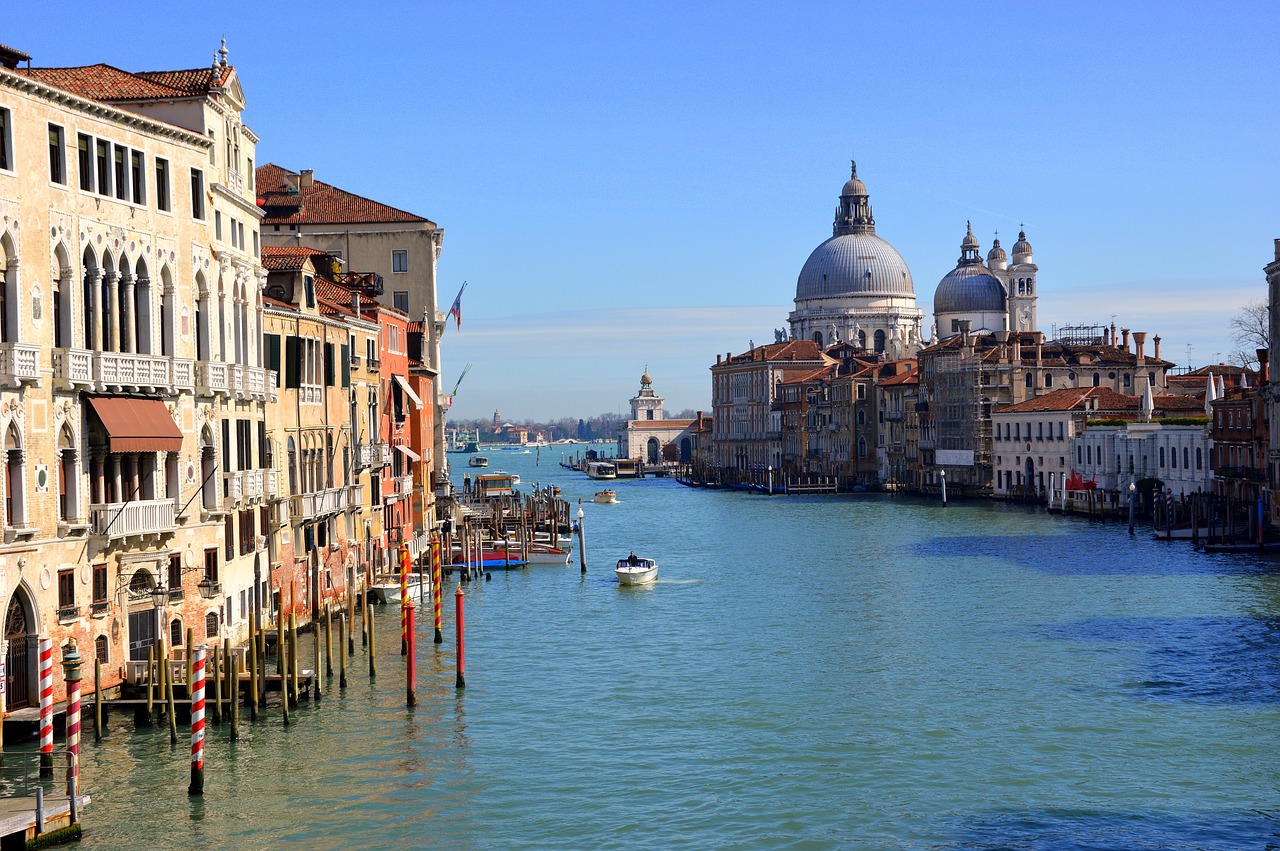Venice
Travel The World

Venice Guide - Places and Sights
Venice is a city like no other. It has had its fair share of supporters – Marco Polo once said, “Every time I describe a city I am saying something about Venice”.
It has also had some critics – Oscar Wilde described a gondola ride through the city’s canals as a coffin floating in a sewer. Naturally, no city is perfect.
Venice presents many advantages – important landmarks and monuments and striking architecture. However, floods are common, and sometimes the smell
can be hard to bear.
There is plenty to see and do in Venice. The city’s elegant palaces and buildings overlook the ancient labyrinth of narrow lanes and the maze of canals.
If you want to take a stroll you should stick to the romantic back streets and residential areas.
The piazzas and main itineraries are often cramped.
Venice is part of an archipelago in the Venetian lagoon. Its historical district is divided into six quarters – San Marco, San Polo, Castello, Dorsoduro, Santa Croce and Cannaregio.
Its main itinerary is the Grand Canal, which extends from the train station to San Marco. If you find the streets too busy you can cruise the waterways onboard a vaporetti or waterbus.
This is less romantic but also less expensive than a gondola ride.
The city’s best attractions include St. Mark’s Basilica, the School of St Roch, the Doge’s Palace, the Gallerie dell'Academia, Rialto Bridge and the Guggenheim museum collection.
St Mark's Basilica is the best known of all churches in Venice and an excellent example of Byzantine architecture. The basilica is located at St. Mark’s Square.
The interior plan consists of three transverse and three longitudinal naves. The Golden Pall forms the altarpiece. There is a baldacchino on columns, covered
with 11th century reliefs above the high altar. The choir features exquisite bronze statues of the Evangelists. St. Mark’s Basilica was consecrated in 1094.
The School of St Roch is famous for the canvasses of Tintoretto, which grace the interior. The artist was commissioned to decorate the building and spent 23 years doing this.
Notable works include scenes from the Crucifixion.
The Doge’s Palace, which played a major role in the history of the basilica, is adjacent to St. Mark’s Basilica. It has been the seat of the archbishop of Venice and
the Patriarch of Venice since 1807.
This magnificent Gothic residence was once inhabited by the Doge or chief magistrate of Venice. The last Doge of Venice abdicated in 1797 and the dogal tradition
was never revived, yet the palace remains. The palace was completed in 1424 after being under construction for over a century. It boasts a spectacular stone-colored
marble façade, which is a true construction feat. The slender arches and pillars are fascinating. The palace was designed in an urban waterfront context.
The third floor is dominated by the Sala del Collegio, a place where foreign ambassadors were received. This hall features the portraits of several Doges and the
Lepanto by Paolo Veronese. The last is a painting of the naval battle of Lepanto of 1571.
The Rialto Bridge is the most famous bridge in Venice. It is the oldest bridge across the biggest watercourse of the city, the Grand Canal.
The Gallerie dell'Academia is home to one of the finest art collections in Europe, chronicling the development of Venetian art from the 1300s to the 1700s.
Works of note in the gallery include Carpaccio's Crucifixion and Apotheosis, Paolo Veneziano's Coronation of Mary, Giovanni Bellini's Madonna with Child
between Saints Catherine and Mary Magdalene, Lorenzo Lotto's Portrait of a Young Gentleman in His Studio, Giorgione's Tempest and Paolo Veronese's
Feast in the House of Levi.
The Peggy Guggenheim Collection is located in the former Palace of the rich heiress. It is among the most memorable
modern art collections in Italy, spanning a wide variety of artistic movements like abstractionism, cubism and surrealism.
The last includes important works by Marino Marini, Picasso, Rothko, Dali and Jackson Pollock.
As for Venice’s downsides, these include floods, the rising rate of decay, the outrageous charges of water-taxi drivers and gondoliers, the smelly
mold-colored waters of the back canals, the broken marble walls smeared with graffiti, the tourist
riffraff in the summer, encompassing not only Venice but also its islands, the peeling paint of the back-street walls, street vendors, screaming children,
the smells of burning meat and red sauce and more.
But some of these aspects can have upsides. Locals may hate it, but the sight of St. Mark’s Square flooded by a still lake of water is unforgettable for a tourist.
Famous photographers have immortalized this sight several times over the years. Getting lost in the back streets is not as bad as it sounds – you may discover
mazes of shadowy alleys, dark misty churches and other interesting buildings – and after that you may suddenly find yourself back on a major itinerary like Calle
Fabbri or Merceria. You will get a whole new perspective of Venice as you watch the serpentine throngs of awestruck tourists pacing down the humid, noisy main streets.